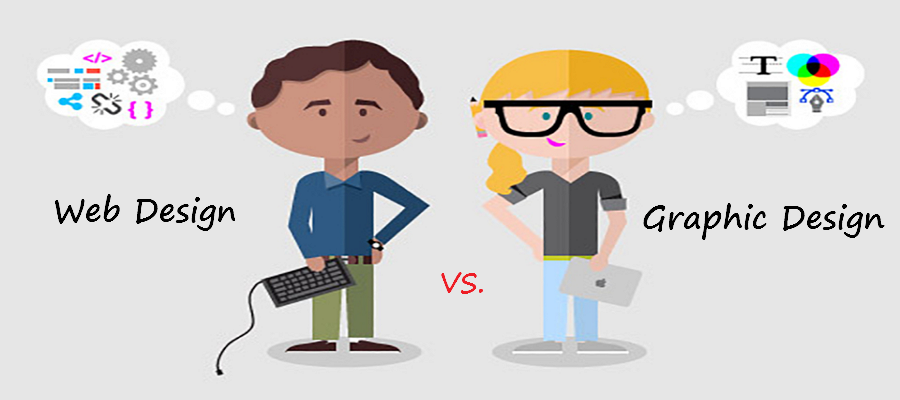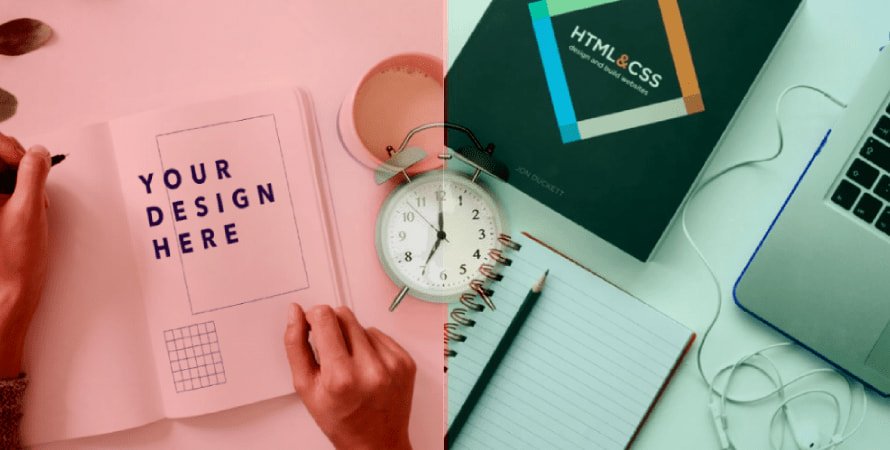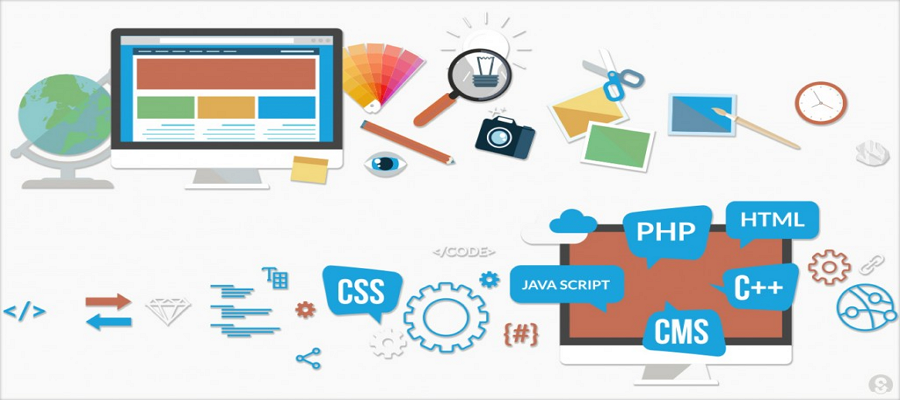Web design and graphic design have a lot in common. Both require a good understanding of typography, graphics, and design principles. But in the end, web design and graphic design are different fields with different concepts.
Web design is a dynamic medium
Comparing web design and graphic design is like comparing the iPad we all know with a painting that hangs in a museum. Both things show beautiful visuals, but one (the iPad) is interactive – you can touch it, zoom in on it, and the other (the painting in the museum), can get you to the guard if you touch it (the painting)
Graphic design has its origins in the print industry. Whether it’s a magazine layout or a children’s book. Any printed materials tend to be less interactive than their digital counterparts. But they are just as dependent on the artistic assembly of images, text, and other graphics to tell a story or convey a message. There has to be logic and navigation to printed materials (book, magazine table of contents) and the like.
Web design, while similar to visual design, focuses on interaction. That is, what people can interact with – participate in – not just consume.
A web designer can work with a graphic designer to visually clarify individual elements, such as illustrations and graphics, but a web designer will then bring all these elements together to create a complete interactive design, something that is fun to interact with and usable.
Terminology:
Graphic designer – aka UI designer
UI designer – is a user interface, aka user interface
Web Designer – aka UX designer
UX in translation means “interaction experience” (User eXperience) and includes various components: information architecture, interaction design.
Web designers need to make sure that users have interest and can achieve their goals on the site. They understand how navigation elements, call to action buttons, and other interactive elements guide, influence, and enhance the user journey.
Many people think the problem with Web site design is that the design (UI) isn’t pretty. But it isn’t. In a sense, graphic designers, like web designers, are interested in UX. But they don’t care as much about the UI, i.e., how the user behaves on the site. Even the very terms (see above) for audiences in each discipline suggest this distinction – graphic design professionals usually mean “viewers,” not “users.”
Web design professionals tend to be UI designers and UX designers in one.But how often have you met these professionals?
Graphic designers have the same skills as web designers. They both know typography, color palettes, composition rules and layouts. But web designers pay attention to how these elements affect interactivity and usability.

Web designers care about loading times and file sizes
IxPixar could fill their site with (award-winning) full-resolution animations, but they keep it to a minimum size for fast loading.
Monstrous file sizes are what keep web designers up at night.
Web designers are for beautiful ideas and aesthetics, but also for optimization.
Images, moving graphics, animations and other graphic elements need to look good and be small enough to load quickly on all devices. Long loading times result in poor site user interaction and high bounce rates.
A graphic designer only worries about file size when trying to put that huge banner ad in the trunk or backseat of their car.
Web designers have barriers to using typography
Graphic designers can use almost any font without worrying about how it will appear in the final result. Any font will do for print.
Web designers, however, need to consider how text will appear on different screens and in different browsers.
Fortunately, adding the @font-face rule to CSS lets you expand your font choices. And apps like Adobe Typekit and Google Fonts give web designers a wider palette of typography to create.
Web designers think about the broad application of their design
Often, graphic designers work within a specific assignment-they create a design that is only for one specific device.
Web designers should work to create a design that fits every device, regardless of its size or shape, without having to redesign.
Look at the huge number of sites on the Internet that are not adapted for mobile devices. And that’s a loss of potential visitors and customers.
Web designers need to consider scale. Typography, images and other visual elements are enlarged or reduced depending on screen size. The goal is for all of these elements to be readable and provide a comfortable experience on any device.
Web designers are not limited by the size of the canvas, but they need to consider every possible way the site can be displayed. Good, thoughtful web designers adapt the basic design to ensure constant interaction with the user.

Web designers are always at work
A Web site is something alive that is constantly changing.
Calls to action and content can be rewritten as needed, products will be added to e-commerce sites, and navigation can be updated to increase conversions.
When a graphic design specialist finishes a project, that’s usually the end of his or her job. But a web designer’s job is never over.
Like an architect, web designers need to anticipate how a Web site can grow and consider the room for change. And they need to remember that the people who commissioned the project may not have web design skills, but they can make changes themselves in the future.
While a graphic designer focuses on creativity, a web designer is concerned with how all the parts of the design function together as a system.
Graphic designers are artists. This beautiful set of avatars Ryan Putnam created for Comcast is creative and detailed.
Web designers have constant interaction with their audiences
A website is all about traffic and repeat visits. It’s a platform that interacts with the audience. If something isn’t right, someone is bound to notice it – and say so.
When something on a site doesn’t work the way it should, or when users hate the design, web designers know it!
The Internet is a network for opinions and feedback. Just read the comments on any article and everything becomes clear.
Take, for example, a billboard: of course, the slogan may not like it, and the color scheme – stupid, but few people will call the agency and say, “I do not like this banner! The person expressed his dissatisfaction in the air and that’s it… That’s where it ends (Well usually.)
Web designers can get feedback on their design successes and failures using Google Analytics. Part of a web designer’s job is to look at the analytics and think of actions they can take to improve performance. Bounce rates, keyword conversions, and popular content are just some of the data a web designer can use to figure out what’s working and what’s not.

Web designers work closely with developers
Good communication skills are important, whether you are a web or graphic designer.
Every project has its own set of defined actions.
Ask the right questions, give feedback. After all, there is more than one person involved in creating a website. This will help any project go more smoothly.
A web designer often works with a developer, or even a development team, who translates the design into functional code. Both you and the frontend developers need to understand the design, all of its intricacies, and the end result you’re going for.
Website designers and web developers need to have clear communication at every stage to make sure the design is fit for purpose.
And lest it turn out like the children’s game “Spoiled Phone” – the web designer’s vision changes as the design turns into code.
Graphic designers are the one-person artist behind their work. They are alone in realizing a creative vision.
Web designers hand over wireframe models and prototypes to developers to convert into functional code. With so many hands on a project, it’s easy to lose focus of the original design goals.
Therefore, only the close collaboration of all professionals will lead to success.
Not to be missed in this article is a reminder of Webflow, which helps the web designer create design and generate clean code at the same time.

Conclusion:
Web design and graphic design are all about VISUAL. And there are a lot of courses now that “train” UI/UX designers all in one. It seems to me that everyone should be good at one discipline.
And what do you think? What else separates or unites graphic and web design? I’d love to see your additions in the comments.
